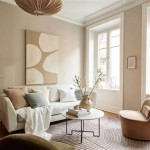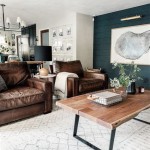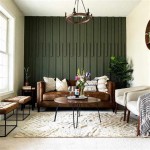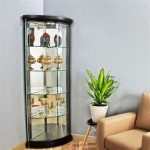White Built-In Cabinets: Enhancing Living Room Functionality and Aesthetics
White built-in cabinets are a popular choice for living rooms due to their versatility, clean aesthetic, and ability to maximize space. These cabinets are custom-designed and installed to seamlessly integrate with the existing architecture of the room, providing storage, display areas, and a focal point. The inherent neutrality of the color white allows these built-ins to complement a wide range of interior design styles, from traditional to contemporary. This article will explore the various aspects of white built-in cabinets in living rooms, including design considerations, material options, functionality, and aesthetic impact.
Design Considerations for White Built-In Cabinets
The design phase is crucial for creating white built-in cabinets that meet specific needs and integrate harmoniously with the existing living room environment. Careful consideration should be given to several factors, including the size and layout of the room, the intended use of the cabinets, and the desired style and aesthetic.
The size and layout of the living room significantly impact the design of the built-in cabinets. In smaller rooms, it is important to maximize storage space without overwhelming the area. Tall, narrow cabinets or cabinets that extend to the ceiling can provide ample storage while minimizing the footprint. In larger rooms, more expansive designs can be employed, incorporating features such as display shelves, media centers, and even integrated seating.
The intended use of the cabinets dictates the internal configuration and features. If the primary purpose is to store books, adjustable shelves are essential. For media equipment, provisions for wiring and ventilation are necessary. If the cabinets are intended to display decorative items, strategically placed lighting can enhance their visual appeal. It's also important to consider the type of items to be stored. Large items may require deeper shelves and larger cabinet doors, while smaller items might benefit from drawers or specialized compartments.
The overall style and aesthetic of the living room should guide the design of the white built-in cabinets. Traditional living rooms might benefit from cabinets with ornate detailing, raised panel doors, and crown molding. Contemporary living rooms often favor minimalist designs with clean lines, flat panel doors, and concealed hardware. Transitional designs blend elements of both traditional and contemporary styles, offering a balance between elegance and simplicity. The chosen hardware, such as knobs and pulls, should also complement the overall style. Stainless steel or brushed nickel hardware is often used in contemporary designs, while antique brass or oil-rubbed bronze hardware can enhance a traditional aesthetic.
Furthermore, consider the existing architectural details of the room. Built-in cabinets can be designed to match or complement existing trim, molding, and baseboards. This creates a cohesive and integrated look that enhances the overall aesthetic of the living room. The color of the white paint should also be carefully considered. Different shades of white can have different undertones, so it's important to choose a shade that complements the existing wall color and other furnishings.
Material Options and Construction Techniques
The choice of materials and construction techniques significantly impacts the durability, longevity, and appearance of white built-in cabinets. Common materials include solid wood, plywood, medium-density fiberboard (MDF), and particleboard. Each material has its own advantages and disadvantages in terms of cost, durability, and workability.
Solid wood is generally considered the highest quality material for cabinet construction. It is strong, durable, and aesthetically pleasing. However, solid wood is also the most expensive option. It is susceptible to expansion and contraction due to changes in humidity, which can lead to warping or cracking. Common wood species used for cabinets include maple, oak, cherry, and walnut. The choice of wood species impacts the grain pattern and overall aesthetic of the cabinets.
Plywood is an engineered wood product made from layers of wood veneer glued together. It is more stable than solid wood and less prone to warping or cracking. Plywood is a good option for cabinet boxes and shelves. High-quality plywood with a smooth surface is essential for painting or finishing. Avoid using low-grade plywood, which can be prone to splintering and delamination.
MDF is another engineered wood product made from wood fibers glued together under pressure. It has a smooth surface and is easy to paint. MDF is a good option for cabinet doors and drawer fronts. However, MDF is not as strong as solid wood or plywood and is susceptible to damage from moisture. It is important to seal MDF properly to prevent water absorption.
Particleboard is the least expensive option for cabinet construction. It is made from wood particles glued together under pressure. Particleboard is not as strong or durable as solid wood, plywood, or MDF. It is also very susceptible to damage from moisture. Particleboard is generally not recommended for high-quality cabinet construction.
In addition to the choice of materials, the construction techniques used also impact the quality and durability of the cabinets. Dovetail joints are a strong and durable option for joining cabinet boxes and drawers. Dado joints are another strong option for joining shelves to cabinet boxes. Screws and glue are commonly used to assemble cabinet components. It is important to use high-quality screws and glue to ensure a strong and lasting bond. The finish applied to the cabinets also impacts their durability and appearance. Multiple coats of primer and paint are essential for achieving a smooth and durable finish. Consider using a high-quality paint that is resistant to scratches and stains.
Functionality and Aesthetic Impact of White Built-In Cabinets
White built-in cabinets offer a multitude of functional and aesthetic benefits for living rooms. They provide ample storage space, create a focal point, and enhance the overall aesthetic appeal of the room. The key to maximizing these benefits lies in thoughtful design and execution.
One of the primary benefits of built-in cabinets is their ability to provide ample storage space. This is particularly valuable in smaller living rooms where space is limited. Built-in cabinets can be used to store books, media equipment, games, toys, and other household items. By providing dedicated storage spaces, built-in cabinets help to keep the living room organized and clutter-free. The design of the cabinets should optimize storage capacity, incorporating features such as adjustable shelves, drawers, and specialized compartments.
White built-in cabinets can also serve as a focal point in the living room. Their clean and elegant aesthetic draws the eye and creates a sense of visual interest. The design of the cabinets can be tailored to complement the existing architectural features of the room. For example, built-in cabinets can be designed to surround a fireplace or window, creating a cohesive and balanced look. The use of decorative elements, such as crown molding, fluted columns, and decorative hardware, can further enhance the aesthetic appeal of the cabinets.
The inherent neutrality of the color white allows these cabinets to seamlessly integrate with a wide range of interior design styles. White is a timeless and versatile color that complements virtually any color palette. It also has the ability to make a room feel brighter and more spacious. When combined with strategic lighting, white built-in cabinets can create a warm and inviting atmosphere. Consider incorporating recessed lighting, accent lighting, and under-cabinet lighting to highlight the features of the cabinets and create a layered lighting scheme.
The impact of white built-in cabinets extends beyond mere storage and aesthetics. They contribute to the overall functionality and enjoyment of the living room. By providing dedicated storage spaces for media equipment and other items, they help to create a more relaxing and functional space for entertaining and relaxing. The ability to customize the design of the cabinets allows homeowners to create a space that is tailored to their specific needs and preferences. Whether it's a cozy reading nook or a state-of-the-art media center, white built-in cabinets can transform the living room into a versatile and inviting space.
In conclusion, white built-in cabinets offer a compelling combination of functionality and aesthetics for living rooms. By carefully considering design, materials, and construction techniques, homeowners can create custom cabinets that enhance the beauty and usability of their living spaces. The versatility of white as a color ensures that these cabinets will remain a timeless and elegant addition to any home.

Snow White Cabinets

White Shaker Living Room Cabinets Design Ideas

Newport Island Beach House Home Bunch An Interior Design Luxury Homes Blog

White Built In Cabinets Design Ideas

Family Room Makeover With White Built Ins And Charcoal Couches

Fireplace And Built In Shelving Reveal Jenuine Home

Furniture Grade White Painted Built Ins Custom Wooden Cabinets And

Custom Living Room Cabinetry And Built Ins Urban Homecraft

New White Built In Shelves The Living Room Dimples And Tangles

19 Stunning Diy Built In Cabinets To Add Value Your Home








